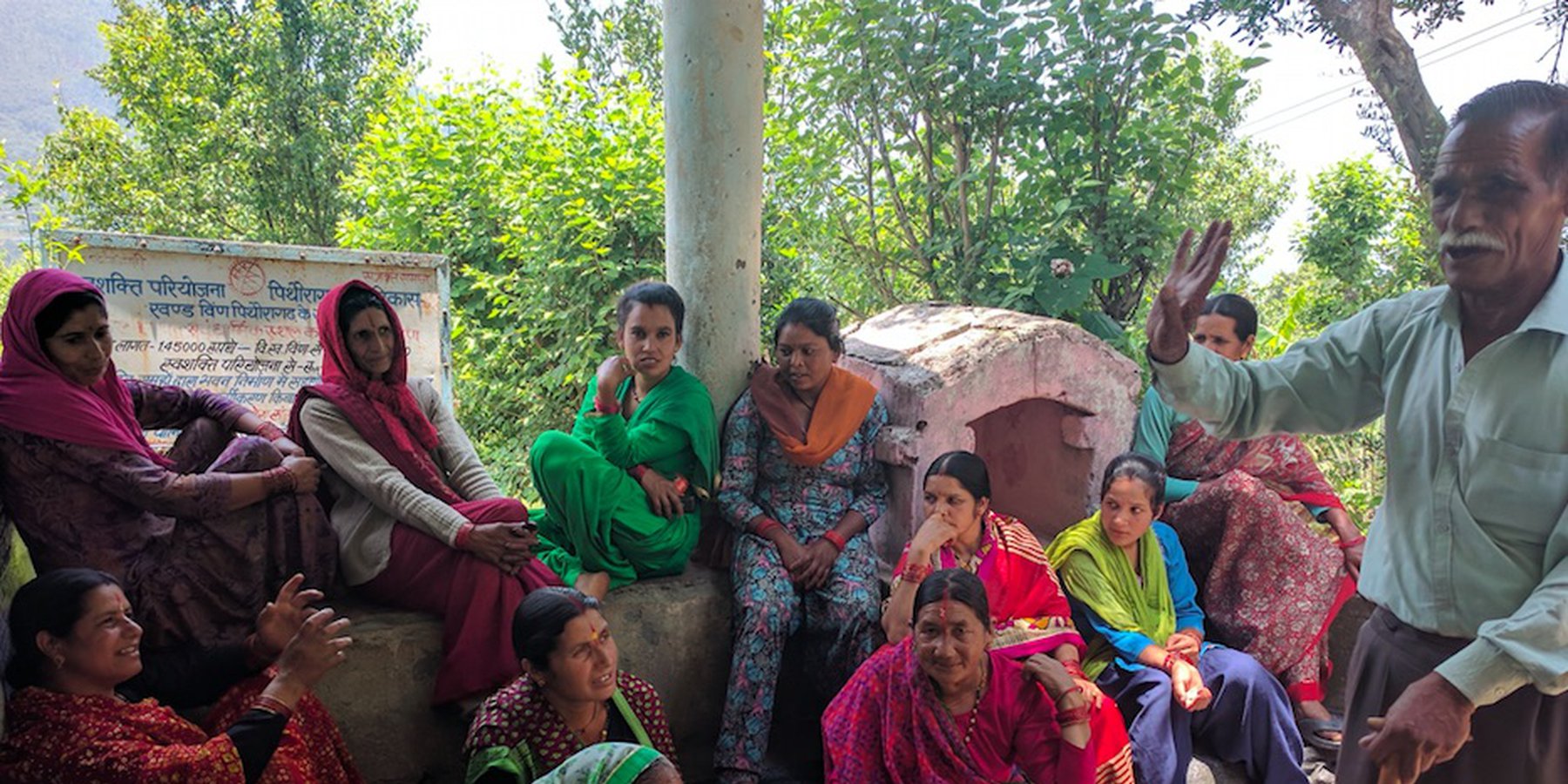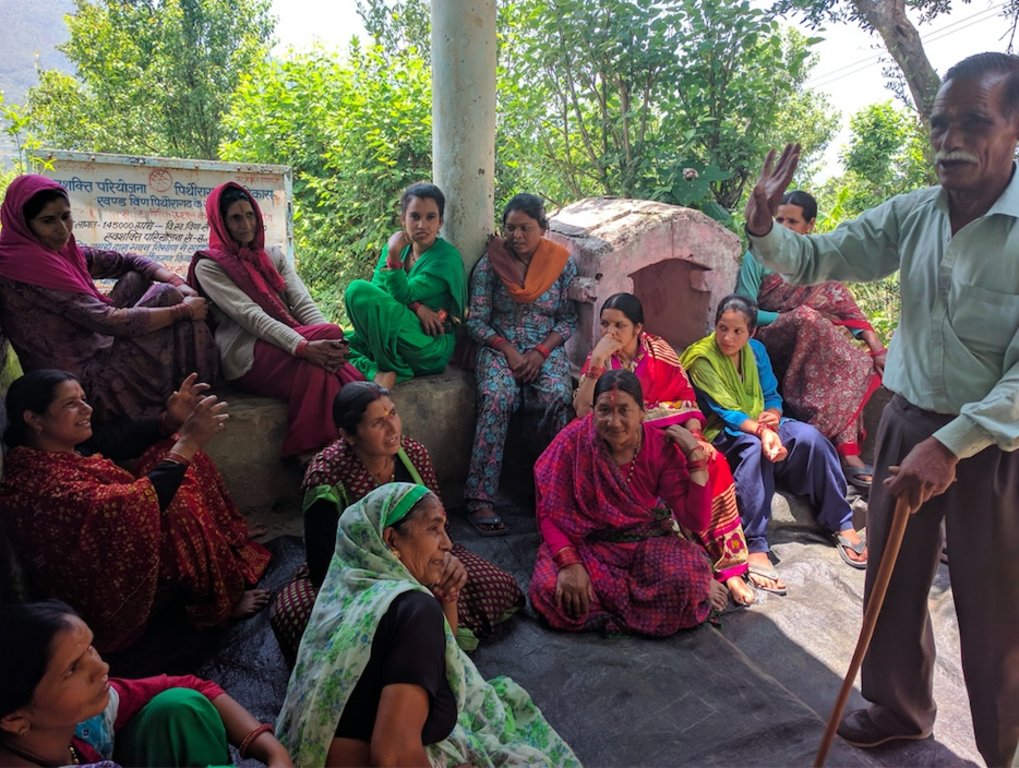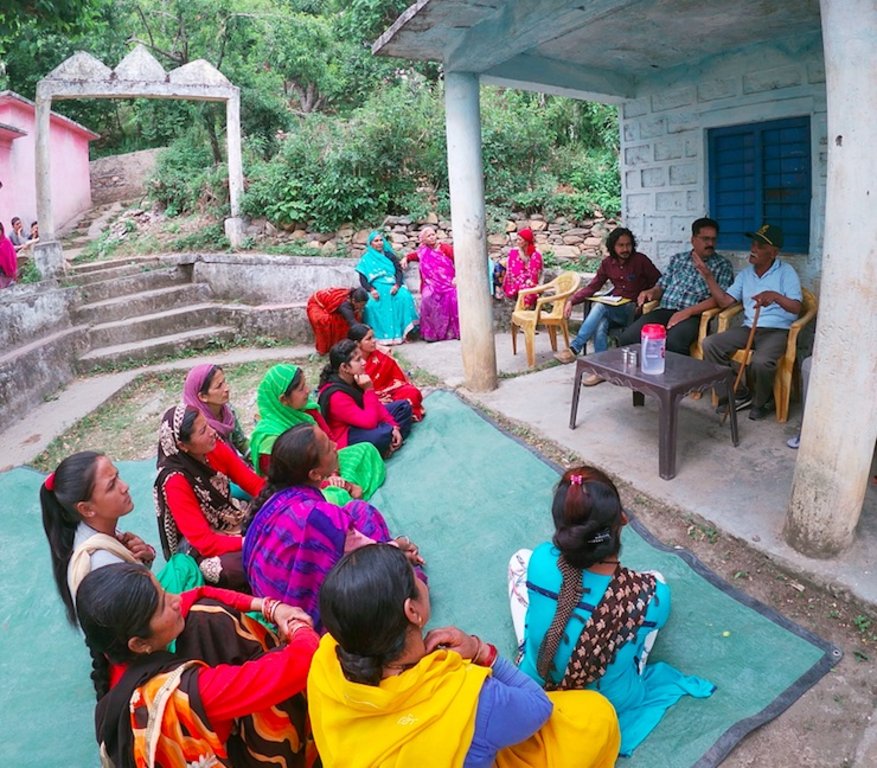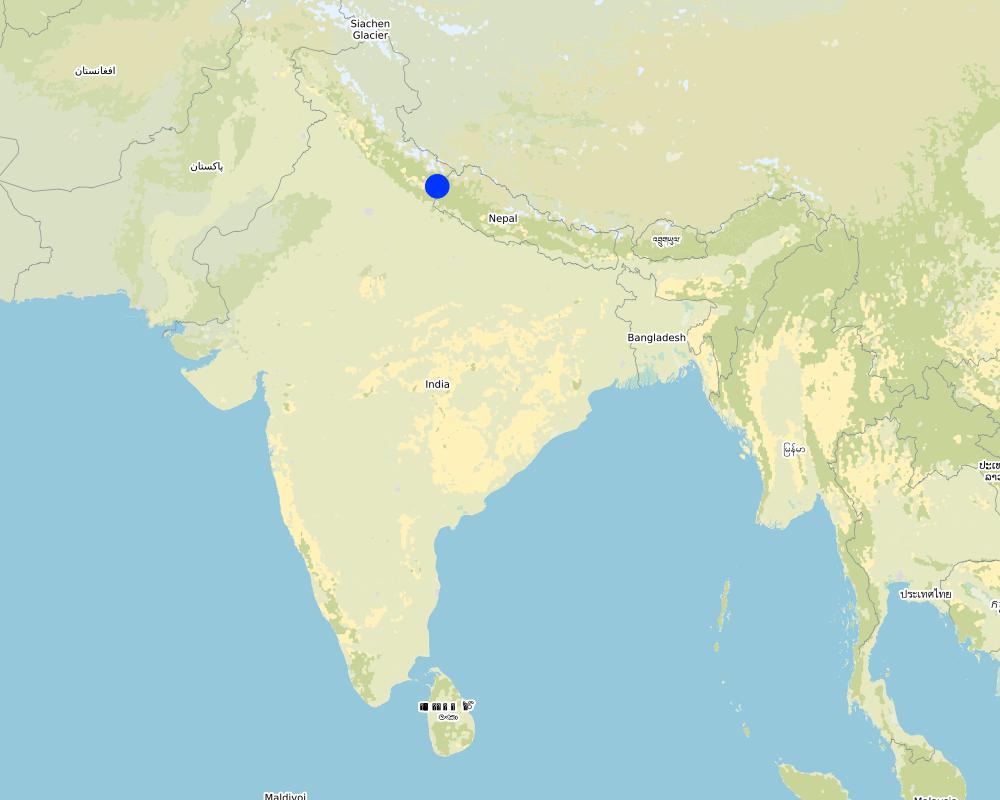Community Forest Management in the Nakina Van Panchayat [Индия]
- Создание:
- Обновить:
- Составитель: Jaclyn Bandy
- Редактор: –
- Рецензент: Hanspeter Liniger
Van Panchayat
approaches_5199 - Индия
- Полная аннотация в формате PDF
- Полная аннотация в формате PDF для вывода на печать
- Полная аннотация в формате интернет-страницы
- Полная аннотация (неотформатированно)
- Community Forest Management in the Nakina Van Panchayat: 21 апреля 2020 г. (inactive)
- Community Forest Management in the Nakina Van Panchayat: 27 июня 2021 г. (inactive)
- Community Forest Management in the Nakina Van Panchayat: 27 июня 2021 г. (inactive)
- Community Forest Management in the Nakina Van Panchayat: 27 июня 2021 г. (inactive)
- Community Forest Management in the Nakina Van Panchayat: 27 июня 2021 г. (inactive)
- Community Forest Management in the Nakina Van Panchayat: 27 июня 2021 г. (public)
Просмотреть разделы
Развернуть все Свернуть все1. Общая информация
1.2 Контактные данные специалистов и организаций, участвующих в описании и оценке Подхода
Ответственный (-ые) специалист (-ы)
землепользователь:
Jagdamda Joshi
+91 90120 10885
Sarpanch of Nakina Van Panchayat
Nakina Village, Pithoragarh Bloc, Uttarakhand, India
Индия
Название проекта, содействовавшего документированию/оценке Подхода (если применимо)
Onsite and Offsite Benefits of SLMНазвание организации (-ий), содействовавших документированию/оценке Подхода (если применимо)
ICIMOD International Centre for Integrated Mountain Development (ICIMOD) - НепалНазвание организации (-ий), содействовавших документированию/оценке Подхода (если применимо)
G.B. Pant Institute of Himalayan Einvironment & Development (G.B. Pant Institute of Himalayan Einvironment & Development) - Индия1.3 Условия, регламентирующие использование собранных ВОКАТ данных
Когда были собраны данные (на местах)?
25/07/2019
Составитель и ответственный/-ые специалист(-ы) согласны с условиями, регламентирующими использование собранных ВОКАТ данных:
Да
1.4 Ссылка (-и) на Анкету (-ы) по Технологиям УЗП
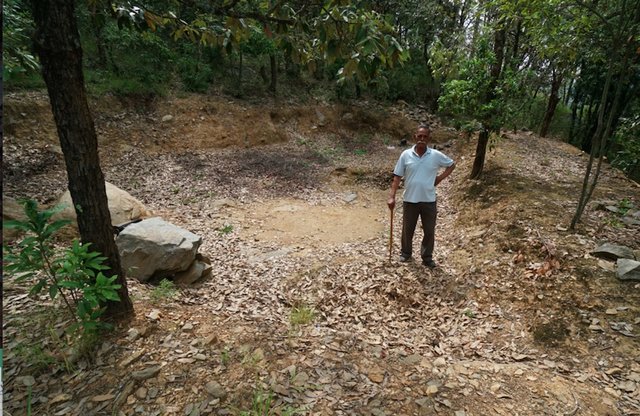
Recharge Ponds and Recharge Trenches [Индия]
Recharge ponds (Chaals or khals) and recharge trenches (khanti) are common methods to catch the surface runoff and increase the infiltration to recharge groundwater and aid in natural spring recharge in the middle mountain regions.
- Составитель: Jaclyn Bandy
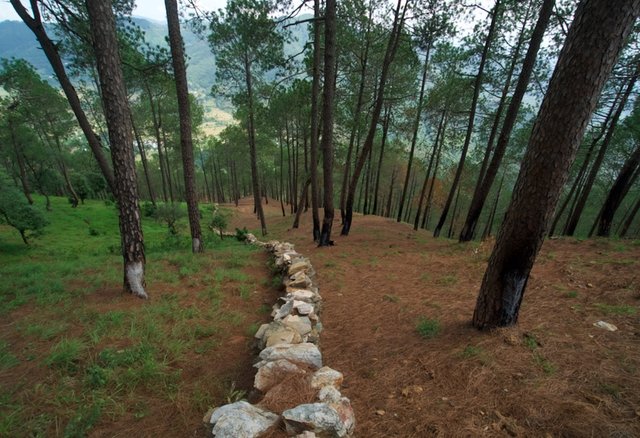
Stone Wall Fencing and Firebreak for Forest Protection [Индия]
A rubble stone wall demarcates the community forest of Nakina Village and acts as a protective barrier against wildfire, wildlife, grazing, and human encroachment. The stone wall fencing is complemented by a firebreak, which is a gap of 2 meters. Firebreak establishment requires the removal of pine needles and debris …
- Составитель: Jaclyn Bandy
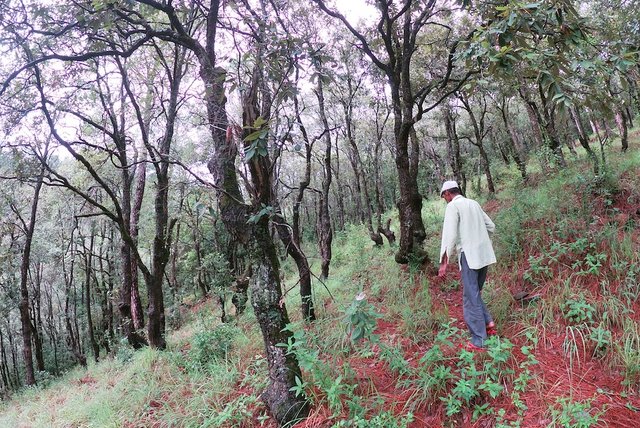
Broadleaf Plantations, Assisted Tree Regeneration and Fodder Nurseries … [Индия]
Natural assisted regeneration of broadleaved species, a small oak plantation and a fodder nursery have been established in the Nakina community forest (intervention area: 10 ha), supporting fodder tree species such as Banj Oak and Falyaat, as well as various subtropical temperate fodder grass species. This has improved the livelihood …
- Составитель: Jaclyn Bandy
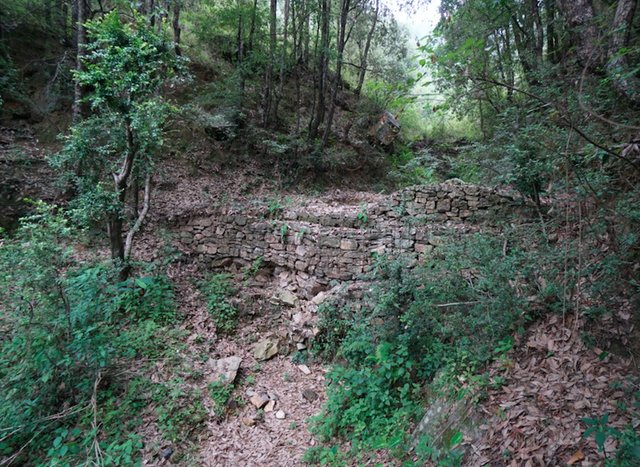
Stone Check Walls and Check Dams for Soil … [Индия]
Stone Check Dams/Walls, Retainment Walls, and a Water Diversion Wall has been constructed in Nakina Village and Nakina Community Forest to help protect their settlements, agriculture land, forest land, and preserve the hilly landscape. These structures serve to reduce the runoff velocity (lowering the rate of erosion and gullying in …
- Составитель: Jaclyn Bandy
2. Описание Подхода УЗП
2.1 Краткое описание Подхода
Van Panchayats or village forest councils are a impressive example of grassroots community management of natural resources, where a specific administrative unit is locally elected by community members who are responsible for the management of activities related to the forest.
2.2 Подробное описание Подхода
Подробное описание Подхода:
Main Characteristics: the forest council has an odd number administrative committee (9), which allows a majority rule to resolve issues. From each household, one person will have the rights to elect the committee. The administrative committee makes the rules and regulations to manage and collect the fuel wood, fodder and wood to build houses or other structures. It also has the rights to collect the charges of using forest resources or penalize trespassers. The government and other institutions recognize this committee and communities for the protection of the forest, which also make joint plans and programs under the consultation with the forest user group and administrative committee. Van Panchayats are under the administrative control of the District Magistrate, though technical assistance is provided by the Forest Department. Organizations can provide financial and technical support to the administrative committee to implement projects.
Main objectives of this approach are:
•To mobilize the communities for sustainable natural resource management and distribute forest produce in an equitable manner
•To provide the financial and technical support for the communities to protect the forest's natural resources.
•To promote technologies for the conservation of natural resources and to increase the livelihood of people
•To encourage the people to establish tree plantations, fodder nurseries, biological and structural interventions for water conservation and maintain wildlife habitat
Methodology and Implementation:
To achieve the above mentioned objectives, the following methods were adopted: the first steps involved clarifying the status of forest utilization and local peoples' livelihood, activities and demands. Initially there was collaboration with the local people and forest department to demarcate the community forest and establish the Nakina van Panchayat in 1952 (according to the Forest Council Act 1931). Awareness-raising meetings informed the local people that the community forest health is determined by their own collective management. Over 30 years ago, Nakina Van Panchayat established a plantation area designated for the propagation of several broadleaved species. This has since been a growing enterprise, and encompasses an area of 7 hectares today. The Japan International Cooperation Agency (JICA) and Forest Department have assisted Nakina VP with this plantation. Despite these efforts there is still a gap in production. The community expressed this persistent availability gap of their fuelwood/fodder supply, and the necessity of maintaining the oak populations for groundwater recharge and spring rejuvenation.
Under the KSLCDI (Kailash Sacred Landscape Conservation and Development Initiative) and with support from ICIMOD, G.B. Pant Institute of Himalayan Environment and Sustainable Development and Nakina Van Panchayat created a plantation area supporting oak and other broadleaved species over an area of 2 hectares (2014-2016) . The community also established a small oak and fodder nursery with support from the Uttarakhand Forest Department, NGO Swati Gramodyog Sansthan (SGS) and NGO Himalayan Sewa Samiti (HSS).
Stakeholders involved and their role:
1. Broadleaf Plantation (+30 years ago, community initiated)
Japan International Cooperation Agency (JICA), UKFD (Uttarakhand Forest Department)- funding, technical and advisory support
Nakina Van Panchayat and Nakina Community: participatory action in all phases of approach, planting, on-going maintenance
2. Oak Plantation
ICIMOD- funding
G.B Pant: project implementation, on-site advisory and technical support
UKFD (Uttarakhand Forest Department)- technical and advisory support
Nakina Van Panchayat and Nakina Community: participatory action in all phases of approach, planting, on-going maintenance
3. Fodder and Oak Nursery
Fodder Nursery: NGOs SGS, HSS- project implementation, provision of plants, planting techniques, and financial assistance
Oak Nursery- self-initiative by Nakina Van Panchayat and the forest user group (local People)
UKFD: gave technical advice and provided financial support to Nakina Van Panchayat; distributed plants and grasses
G.B Pant: organized a 7-day capacity building training in Nakina Village and supported the plantation establishment; there are ongoing projects with Nakina to develop other parts of the forest
Comments on Approach: Land users are very pleased with the success of these approaches. However they stress the need to strengthen on-going communication between various stakeholders and supporting institutions for project optimization, as well as continual support and auditing post-project. More follow up with technical experts would be highly appreciated by the land users.
2.3 Фотографии, иллюстрирующие Подход
2.5 Страна/ регион/ место, где применялся Подход
Страна:
Индия
Административная единица (Район/Область):
Uttarakhand
Более точная привязка места:
Nakina Village, Pithoragarh Bloc
Map
×2.6 Даты начала и окончания реализации Подхода
Год начала реализации:
1952
Комментарии:
The Nakina Van Panchayat was established in 1952 and has been under the leadership of Mr. Jagdamba Joshi for the past 5 years. The broadleaf plantation started +30 years ago. no The fodder nursery was established in 2011-2012. The oak plantation and nursery was established in 2014-2016.
2.7 Тип Подхода
- The approach combines efforts between traditional systems/local initiatives/and projects funded by other organizations.
2.8 Каковы цели/ задачи Подхода
Main objectives of this approach are:
•To protect and develop the forest under the jurisdiction of the Nakina Van Panchayat
•To mobilize the communities for sustainable natural resource management and distribute forest produce in an equitable manner
•To provide or seek out financial and technical support for the communities to protect the forest's natural resources.
•To promote technologies for the conservation of natural resources and to increase the livelihood of people
•To encourage the people to establish tree plantations (broadleaved species), fodder nurseries, biological and structural interventions for water/soil moisture conservation and maintain wildlife habitat.
•Deep-rooted species like oak facilitate better ground-water seepage and enhance spring discharge rates for the communities downstream
2.9 Условия содействующие применению Технологии/ Технологий в рамках Подхода или затрудняющие его
Социальные/ культурные/ религиозные нормы и ценности
- содействуют
Наличие/ доступность финансовых ресурсов и услуг
- содействуют
Under the 1976 Van Panchayat Rules, the access and authority to control funds was greatly improved and the share of forest income was increased from 40% to 80%.
- затрудняют
A Forest Department official is placed inside each VP, controlling its activities as a joint account holder. VP proposals for using their income need prior approval from the Divisional Forest Officer, who may modify how the village institutions use their own income
Институциональные условия
- содействуют
- затрудняют
Сотрудничество/ координация действий
- содействуют
In Uttarakhand, NGOs and civil society groups have historically played a strong advocacy role. The government (forest dept), NGOs, research institutions, and external organizations have been actively working together on various projects across Uttarakhand to support Van Panchayat Forest Joint Management (VFJM). For example, in 2015 total of 750 Van Panchayats in the state have been funded by the Japanese International Cooperation Agency (JICA), providing 85% of the financial support needed for forest restoration programs, as well as soil and water conservation.
- затрудняют
Today, the NGO movement is split into different camps and factions. The vast majority has been co-opted to work as "private service providers" for several donor-funded projects, including the forestry project. Once they accept working on project terms, they effectively lose their critical and questioning voice. Consequently, the potential damage to the region’s unique Van Panchayats from VFJM has been subdued by these changes.
Нормативно-правовая база (землевладение, права на земле- и водопользование)
- содействуют
Программные документы/ руководящие установки
- содействуют
Although there have been historical challenges around forest policies and resource use due to British colonialism, within the last 20 years or so there has been major change in Indian forest policies, Van Panchayat rules and people’s participation in forest management. In 2006, the Indian parliament passed the Forest Rights Act, which for the first time, fully recognized the rights of people over forests and other related natural resources and made these rights independent of the encroachment of forest department.
- затрудняют
Annual plans for VP forest management are actually written by Forest Department staff and subsequently implemented with the involvement of only the Sarpanch and/or some of the elected panchayat members. Villagers are provided only wage labour and are not actively engaged in the planning process.
Управление земельными ресурсами (принятие решений, осуществление и контроль за выполнением)
- содействуют
The joint forest management approach (between local people and government) supports coordination with the people, ownership and access to the forest resources. Each VP can make its own rules and needs as per needs and wisdom.
- затрудняют
Still there are unrelenting difficulties between government support/response regarding forest management in the hill regions. While some governments and communities have governed forests sustainably, others struggle to mitigate degradation or lack commitment to manage forests sustainably, as there are vested powers in the Forest Dept that limit land-users opportunity to participate in the decision making process.
Осведомленность в области УЗП, доступность технической поддержки
- содействуют
Technical support in the form of extensions services, trainings, and advisory support throughout project implementations are provided by various institutions.
- затрудняют
However the support is not consistent and on-site consultations with landusers is limited to the short-term projects
Рынки (для приобретения материалов и услуг, продажи продукции) и цены
- содействуют
Through this approach, the people are unique position and ability to develop alternative agriculture-based strategies (herbs, aromatic plantations). Uttarakhand has been declared as an Organic State and has recently received significant government funding to develop organic farming ( as of January 31, 2018 about Rs 1,500 crore for three years has been sanctioned.)
- затрудняют
At the present time, the status of agricultural market development needs a lot of work. The most crucial factor appears to be linking the producer with the local markets. Current production is mainly for self consumption. Agricultural yields are not very high in Uttarakhand as a whole and also the productivity of the hill districts is generally lower than the state average.
Объем работ, доступность рабочей силы
- содействуют
Women are the effective managers of the rural household economy and forest resource use. They are active participants in the VP activities, either as official committee members or routine attendees of VP meetings
- затрудняют
Lack of employment has led to high male out-migration and lack of interest in forest management
3. Участие и распределение ролей заинтересованных сторон
3.1 Заинтересованные стороны, участвующие в реализации Подхода и их роли
- местные землепользователи/ местные сообщества
Naikina Van Panchayat (9 members)
Naikina Village (300 people)
- ученые-исследователи
G.B. Pant
- общественные организации
Himalayan Sewa Samiti
- местные власти
District Magistrate
Uttarakhand Forest Department, Government of India
- международные организации
ICIMOD
JICA (Japan International Cooperation Agency)
Financial Assistance
3.2 Участие местных землепользователей/ местных сообществ на разных стадиях реализации Подхода
| Участие местных землепользователей/ местных сообществ | Перечислите участников и опишите их вовлеченность | |
|---|---|---|
| инициирование/ мотивация | интерактивное | |
| планирование | интерактивное | |
| выполнение | интерактивное | |
| мониторинг/ оценка | самоорганизация | |
| maintenance | самоорганизация |
3.4 Принятие решений по выбору Технологии/ Технологий УЗП
Укажите, кто принимал решение по выбору применяемой Технологии/ Технологий:
- все участники как часть процесса совместных действий
Поясните на чём было основано принятие решений:
- анализ подробно описанного опыта и знаний по УЗП (принятие решений на основе подтвержденных фактов)
- личный опыт и мнения (незадокументированные)
4. Техническая поддержка, повышение компетенций и управление знаниями
4.1 Повышение компетенций/ обучение
Проводилось ли обучение землепользователей/ других заинтересованных лиц?
Да
Укажите, кто проходил обучение:
- землепользователи
Тип обучения:
- в ходе работы
- общие собрания
Рассматриваемые темы:
Forest management, forest fire, plantation, spring restoration
4.2 Консультационные услуги
Есть ли у землепользователей возможность получать консультации?
Да
Укажите, где именно оказываются консультационные услуги:
- на полях землепользователей
4.3 Институциональная (организационная) поддержка
В ходе реализации Подхода были ли организованы новые институциональные структуры или поддержаны уже существующие?
- да, умеренно
Укажите уровень, на котором структуры были укреплены или вновь созданы:
- местные
Укажите тип поддержки:
- финансовая
- повышение компетенций/ обучение
4.4 Мониторинг и оценка
Являются ли мониторинг и оценка частью Подхода?
Да
Комментарии:
only executed by the village community to a small degree
Если да, будет ли данный документ использоваться для мониторинга и оценки?
Нет
4.5 Научные исследования
Были ли научные исследования частью Подхода?
Нет
5. Финансирование и внешняя материальная поддержка
5.1 Годовой бюджет мероприятий по УЗП в рамках Подхода
Если точный годовой бюжет неизвестен, укажите примерный диапазон затрат:
- 2000-10000
Комментарий (например, основные источники финансирования/ ключевые доноры):
ICIMOD (Kailash Sacred Landscape Initiative)
5.2 Финансирование и внешняя материальная поддержка, предоставляемая землепользователям
Предоставлялась ли землепользователям финансовая/ материальная поддержка для применения Технологии /Технологий?
Да
Если да, укажите тип(-ы) поддержки, кто ее предоставил и условия предоставления:
Supply of material and resources necessary for the plantation and fodder nursery. Partial compensation for community manual labor
5.3 Субсидии на отдельные затраты (включая оплату труда)
- нет
Если труд землепользователя был существенным вкладом, укажите, был ли этот вклад:
- за денежное вознаграждение
5.4 Кредитование
Предоставлялись ли в рамках Подхода кредиты на мероприятия УЗП?
Нет
5.5 Другие методы или инструменты стимулирования
Использовались ли другие методы или инструменты стимулирования для продвижения Технологий УЗП?
Да
6. Анализ влияния и заключительные положения
6.1 Влияние Подхода
Сумел ли Подход расширить возможности местных землепользователей, повысить участие заинтересованных сторон?
- Нет
- Да, немного
- Да, умеренно
- Да, существенно
Van Panchayats come from a grassroots organization. In the case of Nakina Village, has improved coordination across a multitude of stakeholders, including the village, local government institutions and NGOS.
Сумел ли Подход дать возможность принимать решения на основе подтвержденных фактов?
- Нет
- Да, немного
- Да, умеренно
- Да, существенно
As Van Panchayat members are given the freedom to control and manage forest resources, and external institutions have recognized the need to enhance their operations and decision-making processes through trainings (carried out by the Forest Department). Under one such programme at FRI (Forest Research Institute), Dehradun, training on Forest Panchayat management, plantation techniques and fire control methods was given to Nakina VP members.
Сумел ли Подход помочь землепользователям внедрить и поддерживать технологии УЗП?
- Нет
- Да, немного
- Да, умеренно
- Да, существенно
With their own resources, indigenous knowledge, trainings and support from collaborative projects, the approach was a successful mechanism of formal organization for the village. Having legal backup to enforce the rules and regulations developed by the forest users themselves is an effective method to implement and maintain SLM technologies.
Сумел ли Подход улучшить согласованность действий и повысить рентабельность применения практик УЗП:
- Нет
- Да, немного
- Да, умеренно
- Да, существенно
Local NGOs like Swati Gramodyog Sansthan and HSS (Himalayan Sewa Samiti), Pithoragarh have given their support to Nakina Van Panchayat by providing plants and planting techniques and some financial assistance. T
Сумел ли Подход мобилизовать/ расширить доступ к финансовым ресурсам для применения практик УЗП?
- Нет
- Да, немного
- Да, умеренно
- Да, существенно
There is financial resources available to the Nakina VP (via the joint bank account). This is largely due to the recent projects and remaining funds from external organizations (JICA, MNEGRA), however there is constrained space in accessing those funds as the Forest Department has the main authority for financial decisions. Mr. Joshi (Sarpanch, village head) does not have a comprehensive idea of the budget allocation for the village nor the direct freedom to decide how to use these funds. However, he is personally close to the forest staff and regularly communicates the VP propositions and can get clarification on fund management and be granted access to the money with a staff member's signature.
Сумел ли Подход расширить знания и возможности землепользователей в применении практик УЗП?
- Нет
- Да, немного
- Да, умеренно
- Да, существенно
Through instruments of education, motivation and persuasion, this approach has helped the VP an forest users realize their potentials to improve the resource base and their livelihoods.
Сумел ли Подход расширить знания и возможности других заинтересованных сторон?
- Нет
- Да, немного
- Да, умеренно
- Да, существенно
With coordinating NGOs, research institutions, the forest departments and land users, a triangulation of knowledge transfer is encouraged. This platform for the village communities to voice their needs and perceptions is essential for other stakeholders to effectively navigate the future course of these hilly regions and for recognition of true resource capacities.
Сумел ли Подход укрепить сотрудничество между заинтересоваными сторонами/ выстроить механизмы сотрудничества?
- Нет
- Да, немного
- Да, умеренно
- Да, существенно
The approach and active engagement of the Nakina VP has helped different stakeholders realize the need to play more active roles in keeping the institutions alive and effective by brining the communities to the center stage of decision making and promoting participatory forest management at the grassroots level. All levels of organization need to be involved in the preparations of plans/schemes for economic development. G.B. Pant is currently orchestrating a project that will further develop Nakina Forest into a complete "Model-ecosystem Forest" as a leading example of VP forest management and regeneration strategies through more plantations and long-term springshed management.
Сумел ли Подход снизить остроту конфликтов?
- Нет
- Да, немного
- Да, умеренно
- Да, существенно
Ad hoc changes in village boundaries and poor boundary demarcation of village forests, inequitable distribution of forests among villages, and inattention to conflict management among villages have soured inter-village relations in many cases. However, the Nakina VP has been exceptional in mitigating disputes between forest resources and other villages. They are very open to collaboration and organizing with others, like VP members of the Digtoli village. In general, the good communication and neighborly relations have only been enhanced with the approach. This has been recognized by others (villages, external stakeholders)
Сумел ли Подход расширить возможности социально и экономически уязвимых групп?
- Нет
- Да, немного
- Да, умеренно
- Да, существенно
Сумел ли Подход содействать гендерному равенству и расширить права и возможности женщин и девочек?
- Нет
- Да, немного
- Да, умеренно
- Да, существенно
According to Van Panchayat Rules, 2005, (Rule 7) 4 seats are reserved for women of whom one is for SC/ST. As members of the Nakina VP are led by acutely forest-dependent women, this provides more accessible space for community forest management to poor women and marginalized groups. This, being outside the framework of complicated bureaucratic procedures and controls, is an impactful initiative for immediate empowerment of such groups at the local level.
Сумел ли Подход стимулировать молодежь/ будущее поколение землепользователей заниматься УЗП?
- Нет
- Да, немного
- Да, умеренно
- Да, существенно
Mr. Joshi, the head of the VP, has actively been incorporating the younger generations in participatory processes, such as meetings and involvement in interventions. This is often tied with celebratory events in the forest, to merge the social/cultural and conservation aspect into one. However, due to economic opportunities and outmigration their is a lack of interest to participate in the VP and with agriculture activities in general, as it does not demonstrate a promising stable income. Modernity has drastically changes the peoples' aspirations and incomes. Mr. Joshi suggests that if there was a change in policy to fix a salary for committee members, the next generation would be involved and management activities could be carried out effectively with full-time commitment.
Сумел ли Подход разрешить правовые проблемы землевладения/ землепользования, препятствующие использованию технологий УЗП?
- Нет
- Да, немного
- Да, умеренно
- Да, существенно
Nakina VP demonstrates the vast potential of the approach, as they have institutionally restored the ownership and sustainable management of forest to the village community. However, there is dual control of the revenue and forest department on Van Panchayats. All administrative powers are vested in the revenue department and the technical powers are the forest department .This dual distribution of powers often leads to delay in decisions and can create confusion. Placing a forest department functionary as the joint account holder and member secretary inside Van Panchayats can shift institutional accountability to the Forest Department and away from forest users.
Сумел ли Подход способствовать улучшению продовольственой безопасности/ качества питания?
- Нет
- Да, немного
- Да, умеренно
- Да, существенно
Due to protection of forest resources and improved forest resource, there has been more security of the fuel, fodder, water nexus in Nakina. This increased resource availability has in had direct and indirect positive effects for the land users, i.e. increased on-farm productivity from more fodder and drinking water availability via restoration of springs.
Сумел ли Подход расширить доступ к рынкам?
- Нет
- Да, немного
- Да, умеренно
- Да, существенно
Сумел ли Подход улучшить санитарные условия и доступ к водоснабжению?
- Нет
- Да, немного
- Да, умеренно
- Да, существенно
The direct benefits of improved access to water by sustainable forest management were felt just recently by the people of Nakina Village (Dry season, 2019). The improved spring discharge in the Vaishnavi and Bhind Naula have allowed the village to be independent from using the neighboring village's spring water. Still, Nakina is dependent on external water sources to meet their domestic needs. These are unreliable, and consequently the village is still facing acute water shortages in the dry season.
Сумел ли Подход привести к более эффективному использованию электроэнергии/ возобновляемых источников энергии?
- Нет
- Да, немного
- Да, умеренно
- Да, существенно
Dried and fallen leaves (which are used as liter and for making compost), grasses, fuelwood, and timber for home construction all are provided by the forest. As the village access to energy (i.e. gas cylinders, electricity) is not always available, forest fuel is necessary to meet the energy needs. The Nakina VP plays a key role in managing these resources, and with SLM of the forest there is future potential to support the use of biofuels made from woody biomass.
Сумел ли Подход улучшить способность землепользователей адаптироваться к изменениям климата и смягчать последствия катастрофических погодных явлений?
- Нет
- Да, немного
- Да, умеренно
- Да, существенно
The Nakina VP works to sensitize people about practices contributing to climate change and measures to reduce it. They are initiators to disseminate SLM practices for adaptation. In this sense, the VP acts as the main task force manage the land to cope with extreme events and equipping of local communities.
Сумел ли Подход привести к созданию новых рабочих мест/ к расширению возможностей получения дохода?
- Нет
- Да, немного
- Да, умеренно
- Да, существенно
Though there is more money and time saved by increased resource availability, the Van Panchayat can not really raise money and sell surplus forest produce from the area to the right holders for their domestic use. They need prior approval of the Divisional forest officer (OFO), an action which has yet to be taken. If Nakina VP decides to do this, they are permitted to sell fallen twigs, trees branches and grasses to the villagers.
6.2 Основные причины, побуждающие землепользователей внедрять УЗП
- рост продуктивности
Increasing fuel and fodder availability
- рост прибыли (доходности) и рентабельности
- снижение деградации земель
- снижение риска катастрофических погодных явлений
- снижение объёма работ
- нормативно-правовое регулирование (штрафы)/ контроль
- престиж, общественное давление/ солидарность
- причастность к движению/ проекту/ группе/ сети
- экологическая сознательность
- традиции и верования, нравственные ценности
- приобретение знаний и опыта в области УЗП
- улучшение эстетической привлекательности
- снижение остроты конфликтов
6.3 Долгосрочная устойчивость мероприятий в рамках Подхода
Могут ли землепользователи самостоятельно (без внешней поддержки) продолжать применение того, что было реализовано в рамках Подхода?
- да
Если да, опишите как:
The Nakina Van Panchayat has adopted certain methods for the protectIon and management of forest resource under their control. Depending upon the nature of forests and resource availability, each Van Panchayat can evolve its own method and mode of utilization of forest resources. Although external support is usually necessary for the establishment of plantations, the concept of the community driven forest management can improve the capabilities of local land-users and improve the management of their natural forest resources without extensive intervention from others.
6.4 Сильные стороны/ преимущества Подхода
| Сильные стороны/ преимущества/ возможности по мнению землепользователей |
|---|
| The rules and regulations are devised by the Van Panchayat Village Committee for management of their forests. These are unique from one Van Panchayat to another in various management activities, such as division of forest land, management for grazing, lopping, plantation, collection of fodder and fuelwood and plantation. When the rules are acknowledged by the forest users, this can create a high-functioning land-management approach that fits the needs of the people and simultaneously preserves forest resources. |
| The Van Panchayat system represents an integrated approach, emphasizing the need for people's participation in order to reach a balance between meeting needs of resource dependent communities and SLM/biodiversity conservation |
| It reveals and merges the multi sectoral dimensions of the socio-economic and ethical aspects of natural resource conservation (i.e. indigenous resource practices and cultural/religious orientation with forest management and nature) |
| There is mutual agreement with committee members and villagers on the function, rules and regulations of the VP for forest management and the necessary collaborative effort needed by the community to carry out these tasks. (e.g. prevention of felling, accepting fines for encroachment and illegal resource extraction, equitable distribution, forest maintenance and protection activities ) |
| Сильные стороны/ преимущества/ возможности по мнению составителя или других ключевых специалистов |
|---|
| In agreement with the landuser |
| Responsibilities of the VP are successfully laid out in the law to ensure that forest land isn't diverted into another use, and the utilization of the forest products is done in the most advantageous way for the community. |
| The approach effectively grants the decision-making power to use and manage forest equitable distribution of forest produces. It also offers the opportunity for socially marginalized people, specifically women, to be involved. |
6.5 Слабые стороны/ недостатки Подхода и пути их преодоления
| Слабые стороны/ недостатки/ риски по мнению землепользователей | Возможные пути их преодоления/снижения? |
|---|---|
| Due to lack of financial resources, policy support and weakening management practices, many VP institutions have been less effective in recent years. | Challenges and threats to VPs need to be re-examined on the local level; the potentials of conservation and resource management of the communities needs to be discussed and addressed with policy makers, and the major management decisions should assess the impact on the people's livelihoods and the socio-ecological implications for the long-term. |
| A general improvement in attitude and participation of the community towards sustaining the VPs for the long run is necessary. | Spread awareness that the VP can function as the backbone for the village's sustenance and prosperity. Encourage the next generation to participate by introducing policy that fixes a salary for committee members |
| Слабые стороны/ недостатки/ риски по мнению составителя или ответственных специалистов | Возможные пути их преодоления/снижения? |
|---|---|
| The content of the new VP rules suggest a loss of decision making space for the local villagers. The Forest Dept looks after the affairs of the VPs (Van Panchayat regulation 2005a). The Divisional Forest Officer (DFO), who is removed from the real situations, has the responsibility of formulating the management plan of the VP. Thus VPS members are not playing an active role in the management plan. | It would be more effective if the government agencies act as the facilitator for these VP institutions. The villagers should be considered as stakeholders rather than beneficiaries, and have more power to direct and participate in the management plan. |
| There is a need to improve the ability of the VP's to generate funds and improve management. Because of historical land-use patterns and exploitation of natural resources, the potential to promote income generating activities has decreased. | VPs can be further developed by promoting horticulture and medicinal plant cultivation so there is less dependence on wild collection of resources and increased source of income. Ecotourism can be also be combined with this expansion effort and further diversified. In addition, strengthened partnership between the VPs, NGOS, and Forest Dept is required for development in the hill communities. |
7. Справочные материалы и ссылки
7.1 Методы сбора/источники информации
- выезды на места, полевые обследования
4 field visits, several informants from the villages of Nakina and Digtoli
- опросы землепользователей
2 main interviewees: Mr. Joshi and Mr. Patni
- опросы специалистов/экспертов по УЗП
Forest Dept, CHEA, Himalayan Sewa Samiti
- данные, собранные из отчетов и достоверных документов
7.2 Ссылки на опубликованные материалы
Название, автор, год публикации, ISBN:
Natural and Anthropogenic Impacts on Forest Structure: A Case Study of Uttarakhand State, Jaspal S. Chauhan, Alok S. Gautam, R.S. Negi, 2018,
Где опубликовано? Стоимость?
DOI: 10.2174/1874213001811010038, https://openenvironmentalresearchjournal.com/VOLUME/11/PAGE/38/FULLTEXT/
Название, автор, год публикации, ISBN:
Forest Management in Kumaon Himalaya: Struggle of the Marginalised People, Ajay Singh Rawat, 1999
Где опубликовано? Стоимость?
http://uttarakhand.org/reference/forest-management-in-kumaon-himalaya-struggle-of-the-marginalised-people/
Название, автор, год публикации, ISBN:
Van Panchyat Institutions at Crossroad: A Prospective Perception of Forest Dependent Stakeholders from Indian Himalaya, 2015, Aatif Hussain, Kaiser Iqbal, Subhasis Mahato and Nazir A. Pala, Department of Forestry and Natural Resources
Где опубликовано? Стоимость?
Free online access, DOI: 10.5829/idosi.gjer.2015.9.02.94164
7.3 Ссылки на материалы, доступные онлайн
Название/ описание:
Stories of Success: narratives from a sacred land
Адрес в сети Интернет:
http://lib.icimod.org/record/32844/files/SuccessStory.pdf
Название/ описание:
Improving Forest Governance: Experience of Joint Forest Management in India
Адрес в сети Интернет:
http://www.fao.org/3/XII/0774-A1.htm
Название/ описание:
Policy Brief: Spring Revival through Sustainable Land Management (SLM) in the Himalayan Foothills: Uttarakhand, North India Author: Liniger HP, Bandy J, Year: 2020
Адрес в сети Интернет:
https://www.wocat.net/en/projects-and-countries/projects/onsite-and-offsite-benefits-sustainable-land-management/-and-offsite-policy-briefs
Название/ описание:
Video: SLM for Himalayan Spring Revival. Author: Liniger HP, Bandy J, Year: 2020
Адрес в сети Интернет:
https://vimeo.com/429988881
Ссылки и модули
Развернуть все Свернуть всеСсылки

Recharge Ponds and Recharge Trenches [Индия]
Recharge ponds (Chaals or khals) and recharge trenches (khanti) are common methods to catch the surface runoff and increase the infiltration to recharge groundwater and aid in natural spring recharge in the middle mountain regions.
- Составитель: Jaclyn Bandy

Stone Wall Fencing and Firebreak for Forest Protection [Индия]
A rubble stone wall demarcates the community forest of Nakina Village and acts as a protective barrier against wildfire, wildlife, grazing, and human encroachment. The stone wall fencing is complemented by a firebreak, which is a gap of 2 meters. Firebreak establishment requires the removal of pine needles and debris …
- Составитель: Jaclyn Bandy

Broadleaf Plantations, Assisted Tree Regeneration and Fodder Nurseries … [Индия]
Natural assisted regeneration of broadleaved species, a small oak plantation and a fodder nursery have been established in the Nakina community forest (intervention area: 10 ha), supporting fodder tree species such as Banj Oak and Falyaat, as well as various subtropical temperate fodder grass species. This has improved the livelihood …
- Составитель: Jaclyn Bandy

Stone Check Walls and Check Dams for Soil … [Индия]
Stone Check Dams/Walls, Retainment Walls, and a Water Diversion Wall has been constructed in Nakina Village and Nakina Community Forest to help protect their settlements, agriculture land, forest land, and preserve the hilly landscape. These structures serve to reduce the runoff velocity (lowering the rate of erosion and gullying in …
- Составитель: Jaclyn Bandy
Модули
Нет модулей


